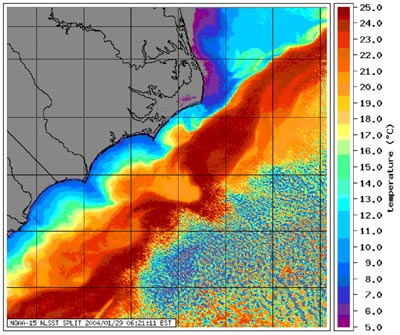North Carolina is well known for both its distinctive barrier islands (making Pamlico Sound the largest lagoon in the U.S.) and highly productive fisheries. Both of these features exist in large part because North Carolina sits that the point where two of the largest ocean currents in the Atlantic meet. From the north, the Labrador Current meanders from the Arctic Circle along the Canadian, New England, and Mid-Atlantic shorelines and crashes into the Gulf Stream at Cape Hatteras, deflecting this warm current off its own shore-hugging course from the south and out across the Atlantic Ocean. Aside from literally defining the shape of the Outer Banks, the collision zone represents the boundary between temperate waters to the north and subtropical waters to the south. This presence of this border means that, depending on the time of year and local weather conditions, you can catch just about any marine fish native to the Northwest Atlantic Ocean off of the Outer Banks.
